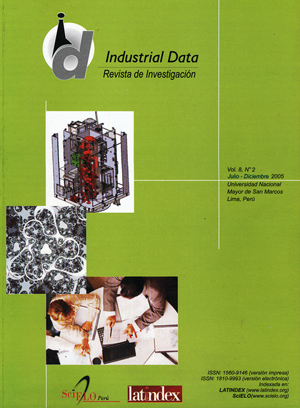IDENTIFICATION OF MODAL PARAMETERS OF VIBRATING STRUCTURES WITH UNKNOWN ORSTOCHASTIC EXCITATION
DOI:
https://doi.org/10.15381/idata.v8i2.6186Keywords:
VARMA, modal analysis, companion matrix, multivariate, estimation.Abstract
The Vector Autoregressive Moving Average (VARMA) Model is used to identify dynamical characteristics of a structural system in the presence of noise. In order to estimate the parameters of the VARMA Model, the Spliid’s fast algorithm is used. To determine the modal parameters the companion matrix is built with the autoregressive part of the VARMA Model. The performance of this method here discussed is presented by means of simulations, using three degrees of freedom mass-dampingstiffness vibrating system.
Downloads
Downloads
Published
Issue
Section
License
Copyright (c) 2005 Roberto Amaro Baldeón, Paulo Gardel Kurka

This work is licensed under a Creative Commons Attribution-NonCommercial-ShareAlike 4.0 International License.
AUTHORS RETAIN THEIR RIGHTS:
a. Authors retain their trade mark rights and patent, and also on any process or procedure described in the article.
b. Authors retain their right to share, copy, distribute, perform and publicly communicate their article (eg, to place their article in an institutional repository or publish it in a book), with an acknowledgment of its initial publication in the INDUSTRIAL DATA.
c. Authors retain theirs right to make a subsequent publication of their work, to use the article or any part thereof (eg a compilation of his papers, lecture notes, thesis, or a book), always indicating the source of publication (the originator of the work, journal, volume, number and date).






